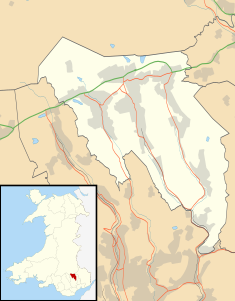
Abertillery is the largest town and a community of the Ebbw Fach valley in the historic county of Monmouthshire, Wales. Following local government reorganisation it became part of the Blaenau Gwent County Borough administrative area.

The small village of Aberbeeg lies in the county borough of Blaenau Gwent in Wales, within the historic boundaries of Monmouthshire. It is part of the community of Llanhilleth. The two main tributaries of the Ebbw River, the Ebbw Fawr and Ebbw Fach converge at Aberbeeg.

Caerphilly is a county borough in southern Wales, straddling the ancient county boundary between Glamorgan and Monmouthshire. It is governed by Caerphilly County Borough Council.
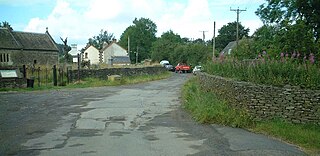
St Illtyd is a hamlet near Aberbeeg, in southeast Wales, within the historic boundaries of Monmouthshire. It is situated on the mountain road between Pontypool and Abertillery in Blaenau Gwent. It rests at about 1200 feet above sea level. The Royal Mail postcode is NP13 2AY.

Fairwater is a community and suburb of Cwmbran in the county borough of Torfaen, in south east Wales, and was built by the Cwmbran Development Corporation between 1963 and 1966.
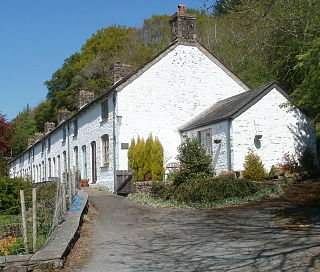
Cwmavon is a hamlet about 2 miles south of Blaenavon and 4 miles north of Pontypool. The hamlet is part of the community of Abersychan in the county borough of Torfaen in south east Wales, and is within the boundaries of the historic county of Monmouthshire.
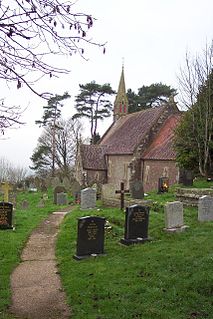
Llanishen is a village in Monmouthshire, south east Wales, United Kingdom. It is located 7 miles (11 km) south west of Monmouth and 3 miles (4.8 km) south of Trellech on the B4293 road, although the main part of the village is set immediately to the west of the road, overlooking the Vale of Usk.

Bedwellty House is a Grade II-listed house and gardens in Tredegar, in the Sirhowy Valley in south-east Wales. It was built in the early 19th century on the site of an earlier building and subsequently enlarged into its present form by mid-century. The owners donated the house and its grounds to the public at the beginning of the 20th century. They were restored at the beginning of the 21st century and are open to the public.

Blaenavon Ironworks is a former industrial site which is now a museum in Blaenavon in Wales. The ironworks was of crucial importance in the development of the ability to use cheap, low quality, high sulphur iron ores worldwide. It was the site of the experiments by Sidney Gilchrist Thomas and his cousin Percy Gilchrist that led to "the basic steel process" or "Gilchrist-Thomas process".
The Pontypridd Deanery is a Roman Catholic deanery in the Archdiocese of Cardiff which covers several churches and the university chaplaincy in Pontypridd and the surrounding area of Rhondda, the southernmost part of the Cynon Valley, and Caerphilly. In the early 2000s, the Head of the Valleys deanery was split. The churches in its western part, in the county boroughs of Merthyr Tydfi and Rhondda Cynon Taf, became part of the Pontypridd deanery and the churches in its eastern part, in the county borough of Blaenau Gwent, became part of the North Gwent Deanery.

This is a list of the 53 Grade I listed buildings in Monmouthshire, Wales.
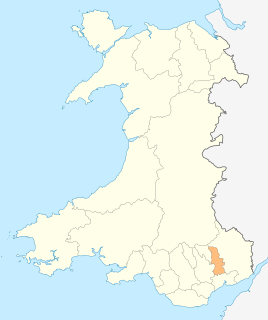
In the United Kingdom, the term listed building refers to a building or other structure officially designated as being of special architectural, historical, or cultural significance; Grade I structures are those considered to be "buildings of exceptional interest". Listing was begun by a provision in the Town and Country Planning Act 1947. Once listed, strict limitations are imposed on the modifications allowed to a building's structure or fittings. In Wales, the authority for listing under the Planning Act 1990 rests with Cadw.

In the United Kingdom, the term listed building refers to a building or other structure officially designated as being of special architectural, historical, or cultural significance; Grade II* structures are those considered to be "particularly important buildings of more than special interest". Listing was begun by a provision in the Town and Country Planning Act 1947. Once listed, strict limitations are imposed on the modifications allowed to a building's structure or fittings. In Wales, the authority for listing under the Planning Act 1990 rests with Cadw.

St Mellons Parish Church, also previously called St Melan's church, is a Church in Wales parish church in the Diocese of Monmouth in Old St Mellons, Cardiff, Wales. It was built around the 13th century and is a Grade I listed building.

St Illtyd's Motte is the remains of a motte-and-bailey castle in the village of Llanhilleth, Blaenau Gwent, Wales. It was probably destroyed by Llywelyn the Great in the early thirteenth century and not rebuilt. The remnants are a Scheduled Ancient Monument.

Smart's Bridge, Llanelly, Monmouthshire, is a cast-iron bridge situated in Clydach Gorge. Constructed in 1824, it gave access to the Clydach Ironworks, the most significant industrial enterprise in the gorge. The bridge was designated a Grade II* listed structure in 2000.
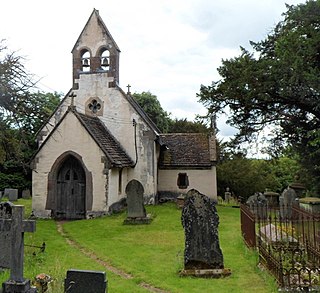
The Church of St Illtyd, Mamhilad, Monmouthshire, Wales, is a parish church with its origins in the 11th century. Renovations took place in the 19th century and again in 1999–2000. It is a Grade II* listed building and an active parish church.

Badminton is a community and electoral ward in Blaenau Gwent, Wales, with the community being created in 2010.
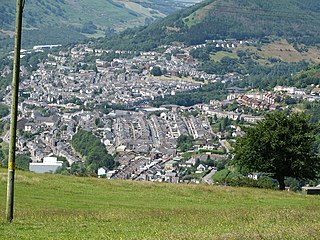
Six Bells is an electoral ward and neighbourhood in Abertillery, Blaenau Gwent, Wales. It was originally a village that grew up around the local coal mines. The ward elects two county councillors to Blaenau Gwent County Borough Council.



